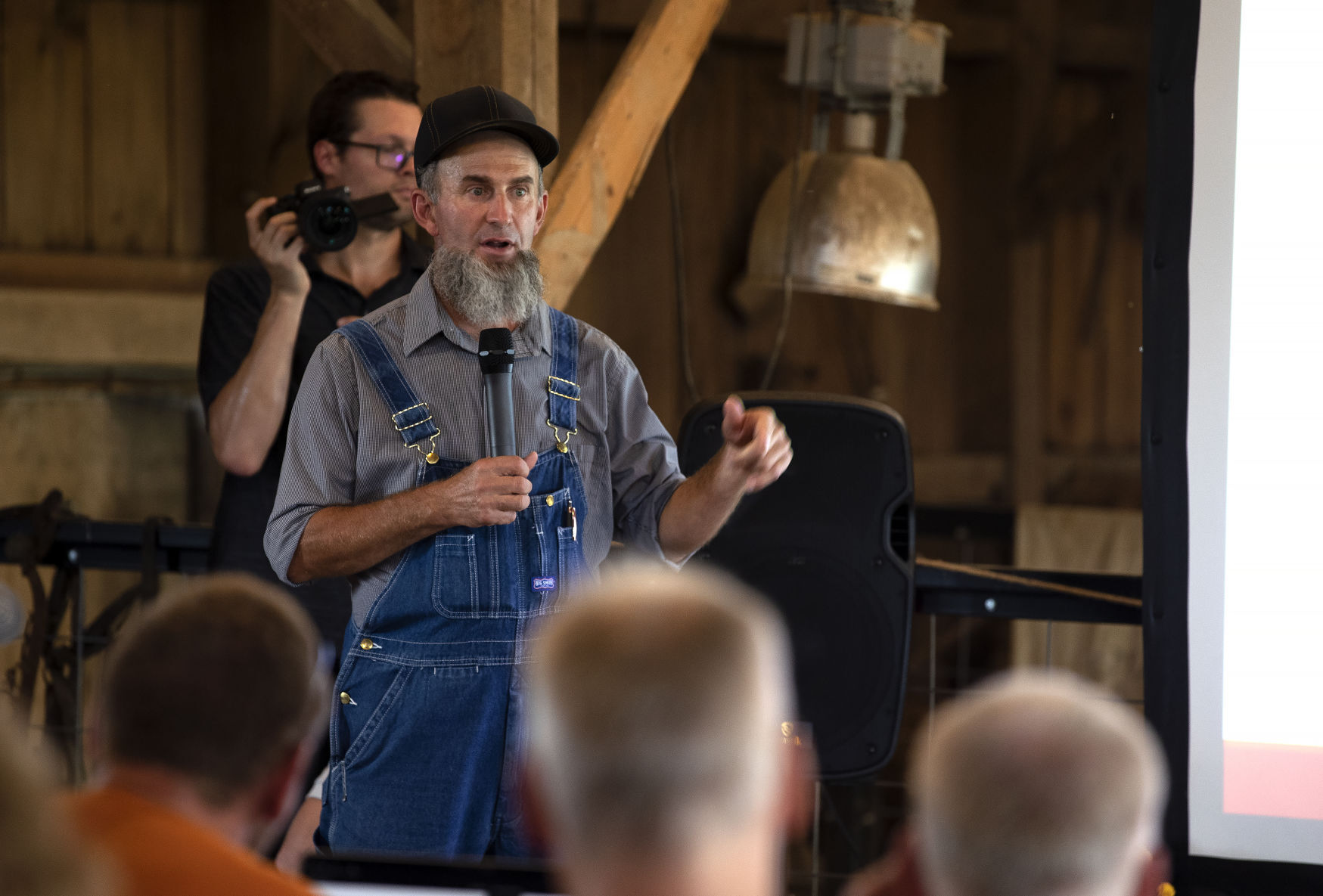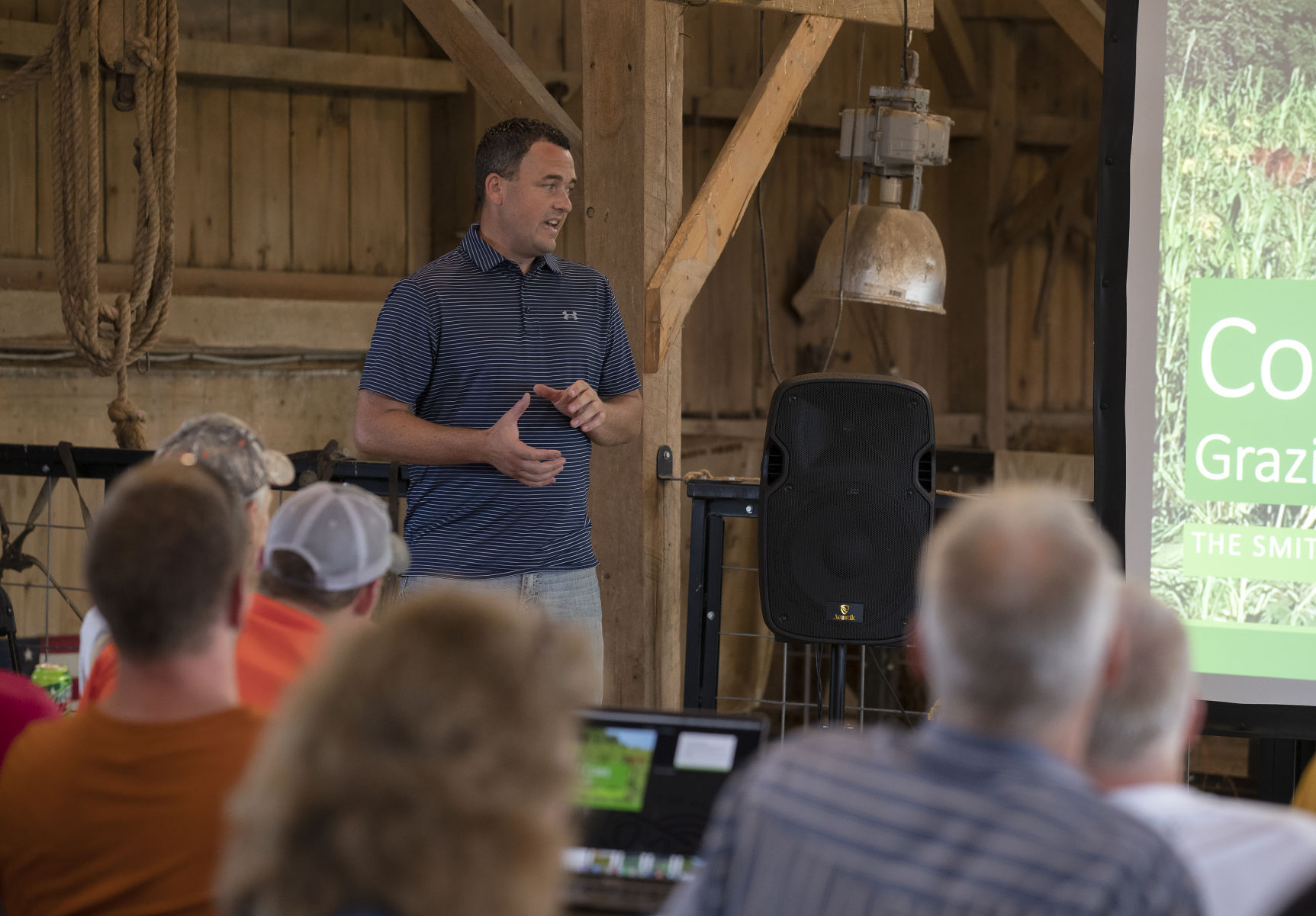DURANGO, Iowa — Farmers in Dubuque and Jackson counties are turning to an increasingly popular method of grazing cattle on summer-planted cover crops to increase both revenue and soil health.
More than 100 farmers and agriculture industry representatives gathered Wednesday on Nick Smith’s family farm in Durango to learn more about Smith’s and Jackson County farmer Jamie Hostetler’s experiences using the method.
The field day was sponsored by Dubuque County’s watershed program and also served to promote the county’s three first-year soil health and water quality improvement programs through which farmers are paid for adopting soil health practices.
The grazing method highlighted Wednesday includes seeding a cover crop mix — such as sorghum Sudan grass, cowpeas or sunn hemp — as soon as possible in the spring, then grazing cattle herds through later in the summer. It mimics the natural phenomenon of bison and other undulates in native prairie and can help improve soil health and water quality and reduce the need for fertilizer.
Eric Schmechel, coordinator for Dubuque County’s watershed program, said the method has grown significantly in popularity in recent years.
“Recently, you see a lot more guys incorporating covers into their grazing,” he said. “A lot of times, it makes sense for them.”
Smith said the method has been useful in making hard-to-reach fields in the hilly, Driftless-area landscape more productive.
“On this farm, we have a lot of small fields that are a pain to farm,” he said. “They’ve got trees around them and a lot of wildlife issues. We decided to start growing forages to get some value out of those fields, more than in corn or soybeans.”
Smith said the practice had paid off financially.
“Ignoring land costs, I’m coming up with $400 of revenue over cost,” he said. “Our calving goes a lot better too, because the cows are getting all that exercise.”
Smith also said the practice led to more water infiltrating into the soil rather than carrying soil away.
Hostetler said the practice has helped him revive soil biology on his Rolling Meadows Farm outside Bellevue, where he raises Red Devon cattle.
From 2010 to 2016, the last time the land was surveyed, organic material in soil where he practiced this method increased from 2.5% to more than 4%, a significant jump.
“The next spring, (the field) came back with a zest and we had 86 round bales (of alfalfa) off of it,” he said. “Water infiltration improved. Water utilization improved. Trampling that down woke up the biology. Since then, that section has never been the same.”
Jack Smith, Nick’s father, said his family had worked the Durango farm since 1853 and that this new method is a continuation of his family’s legacy.
“We’re at a crossroads now with what we’re going to do in terms of sustainability,” he said. “I’d suggest trying something on your farm.”




